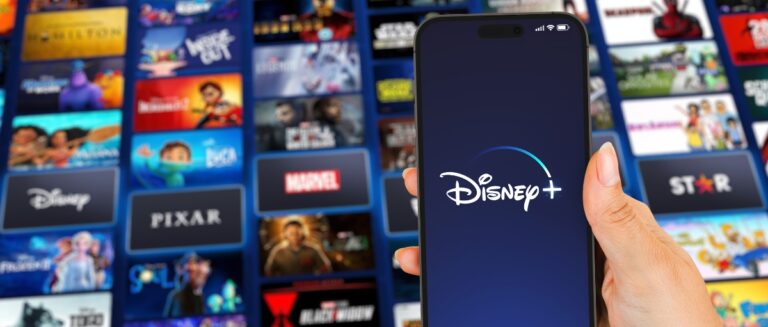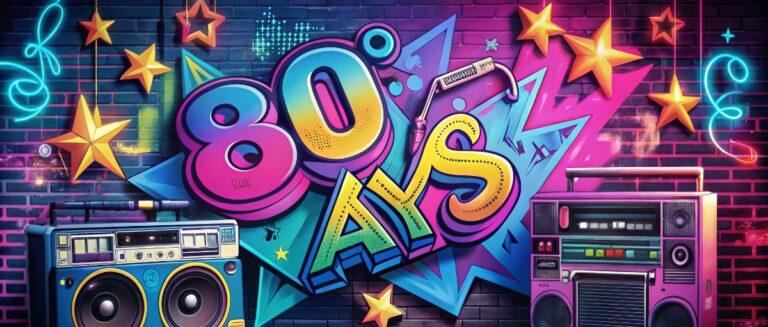In 2022, Disney World had about 50 million visitors. For many visitors to Disney’s theme parks, the magic isn’t just in the attractions, shows, and characters—it’s in the parks’ commitment to accessibility, which allows guests with disabilities and their families to experience that magic, too.
Disney’s Disability Access Service (DAS), sometimes called the Disney World disability pass, is a program designed to assist guests who are unable to wait in a traditional queue environment due to a disability. According to a Disney spokesperson, participation in the DAS program has tripled in the past five years, highlighting its growing impact.
Recently, Disney’s DAS program update have caused confusion and concern among guests with disabilities. The program has been overhauled due to a significant increase in usage, aiming to reduce abuse and ensure it’s available to those who truly need it.
We’ll help you understand the new DAS program, its impact on your visit, and other available accommodations so you can confidently navigate Disney’s parks.
What is Disney’s Disability Access Service (DAS)?
Disney’s Disability Access Service, or DAS, is a program designed to assist guests who, due to a disability, are unable to tolerate extended waits in a traditional queue environment. DAS allows these guests to schedule a return time for attractions, similar to a FastPass or the newer Lightning Lane system, so they can wait in a more comfortable, less crowded area until their return time arrives.
The DAS program is intended for guests whose disability prevents them from waiting in a conventional queue. This might include disabilities such as autism, anxiety disorders, mobility issues that make standing for long periods difficult, or any other condition that makes the standard queue experience challenging or impossible.
It’s important to note that DAS is not intended for guests who simply don’t want to wait in line but specifically for those who cannot due to a disability.
How DAS Used to Work
Before the recent changes, guests could visit Guest Relations at any of the four Walt Disney World theme parks to register for DAS. The guest with the disability and up to five members of their party could be included on the pass.
Once registered, the DAS holder could visit an attraction and request a return time based on the current standby wait minus 10 minutes. They were then free to enjoy the park until their return time, at which point they could enter the attraction through the Lightning Lane (formerly FastPass) entrance. DAS holders could only hold one return time at a time.
This system allowed guests with disabilities to experience attractions without having to wait in the standard queue physically, but it still required some level of waiting and planning. The recent changes to DAS aim to address some of the challenges and loopholes in this system, but they have also sparked concerns about the program’s accessibility moving forward.
Timeline of changes and new policies
Disney announced significant changes to the DAS program in early 2023, with the new policies taking effect in different phases. The first major change, a new advance registration process, was implemented on May 20, 2024, for Walt Disney World in Florida. Disneyland in California will see the changes take effect on June 18, 2024.
Key changes implemented
- Registration process: Guests must now register for DAS through a live video chat with a cast member, available up to 30 days in advance of their park visit. This replaces the previous system where guests could register in-person at the parks. The DAS user and a parent or guardian must both participate in the registration process.
- Validity period: DAS is now valid for up to 60 days, a significant increase from the previous 7-day validity period. This means guests won’t need to re-register as often.
- Attractions selections: Registered DAS users can now make attraction return time selections directly in the My Disney Experience app, instead of having to physically go to each attraction or visit a kiosk. Selections can be made as soon as the DAS user has entered a park.
- Party size: A DAS user can include up to five other guests in their party, for a total of six. Previously, the limit was the DAS user plus up to five guests.
Reasons Cited by Disney for Changes
Disney has cited the significant increase in DAS usage in recent years as a driving factor behind the changes. In a statement, the company said DAS usage has tripled since 2019, leading to concerns about abuse of the system.
“Disney is dedicated to providing a great experience for all Guests, including those with disabilities, which is why we are so committed to delivering a wide range of innovative support services aimed at helping our Guests with disabilities have a wonderful time when visiting our theme parks.”
Disney also added on their website that the DAS program is now specifically tailored for guests with “a developmental disability like autism or similar.”
By requiring advance registration and implementing a longer validity period, Disney aims to ensure DAS is being used by those who truly need it while reducing the need for guests to continually re-register. The ability to make selections in the app is intended to provide more flexibility and convenience for DAS users.
While Disney maintains that the changes are designed to improve the DAS experience and protect the program’s integrity, the new policies have sparked significant concern and pushback from the disability community, as we’ll explore in the next section.
Concerns and reactions to DAS changes
The changes to Disney’s DAS program have sparked significant concern and pushback from the disability community. Many guests who have relied on DAS to access the parks are worried that the new policies will make it harder for them to enjoy Disney magic.
One major concern is the reports of guests with disabilities being denied DAS under the new guidelines. Some guests who had previously been approved for DAS, including those with mobility issues or chronic illnesses, have reported being told they no longer qualify. There are concerns that the new registration process is inconsistent and may exclude people with legitimate needs.
There is also frustration with the new registration system itself. Some guests have reported technical issues with the video chat platform, long wait times to connect with a cast member, and a lack of clarity on what documentation or information they need to provide.
The new process can feel daunting and inaccessible for guests who were used to the simplicity of registering in the parks.
Perhaps the biggest worry is that the changes signal a broader shift in Disney’s approach to accessibility. Some fear that by tightening the rules around DAS, Disney is sending a message that guests with certain types of disabilities are not welcome or accommodated.
There are concerns that without DAS, some guests will simply not be able to enjoy the parks in the way they have before.
While Disney maintains that the changes are intended to improve the DAS program and protect its integrity, it’s clear that for many in the disability community, the updates have caused more stress and uncertainty than reassurance. In the following sections, we’ll dig into how the new DAS system works and what other accommodations are available.
How to Use DAS Under the New System
If you plan to use DAS on your next Disney trip, here’s what you need to know about the new process.
Registration Process
- You’ll need a Disney account and valid park admission to register for DAS. If you don’t already have one, you can create an account on the Disney website.
- Up to 30 days before your park visit (or on the day of, subject to availability), you’ll need to log into your account and initiate a live video chat with a cast member. You can do this through the Disney website or the My Disney Experience app.
- The person who will be using DAS must be present for the video chat, along with a parent or guardian if the user is under 18. During the chat, the cast member will ask about your specific needs and determine your eligibility for DAS.
Making DAS Selections in the Park
- Once you’ve registered for DAS and entered a park, you can start making attraction return time selections. You can do this directly in the My Disney Experience app by tapping on the “DAS” and selecting an available attraction.
- You can also visit a Guest Relations location or one of the blue Guest Experience umbrellas located throughout the park to make your selections if you prefer.
- You can only hold one DAS return time at a time. Once you’ve redeemed a return time, you’ll need to wait 10-15 minutes before making another selection.
Other Important Details
- When it’s time to ride, you’ll need to go to the attraction entrance, where the DAS user must be the first to enter. The rest of the party can then enter with them.
- DAS is limited to a party of six, including the DAS user and up to five others. Larger families can request an exception.
- DAS selections cannot be made during Extra Magic Hours or Early Theme Park Entry.
The new DAS system may require some adjustment, especially for those used to the previous process. However, with some planning and preparation, it can still be a valuable tool for making Disney parks more accessible.
What to Do if Your Disney Disability Pass is Denied
If you’re not eligible for DAS under the new guidelines or looking for additional accommodations, there are a few other options available:
- Attraction Queue Re-entry: Guests who have difficulty waiting in line can leave the regular queue and rejoin their party later. This is handled individually at each attraction, and guests need to talk to a cast member at the ride entrance for guidance.
- Using Disney Genie+ and Individual Lightning Lane: These paid services allow guests to access expedited “Lightning Lane” queues at select attractions. They can be a good alternative for guests who want to minimize their time in line but don’t qualify for DAS.
- Rider Switch: Rider Switch is for guests with a child who doesn’t meet a ride’s height requirement. It lets adults take turns riding while one waits with the child. It’s not an accessibility accommodation, but it can help families or groups where someone can’t or chooses not to ride a certain attraction.
While not one-size-fits-all, these accommodations can provide options for guests who may not be eligible for DAS under the new guidelines. It’s worth exploring which ones work for your specific needs.
Determining DAS Eligibility and Navigating Disney Parks with a Disability
So, who is eligible for DAS under the new system? Disney has said that DAS is intended for guests who cannot wait in a traditional queue environment due to a disability. This might include conditions like autism, anxiety disorders, mobility issues that make standing for long periods difficult, or other similar disabilities.
It’s important to note that DAS eligibility is not based on a specific diagnosis but rather on how an individual’s disability impacts their ability to wait in a standard queue. The new registration process is designed to assess each guest’s individual needs.
If you’re planning a Disney trip with a disability, whether you qualify for DAS or not, here are a few tips to keep in mind:
- Plan ahead: Research the accommodations available and consider which ones might work for your needs. If you’re hoping to use DAS, be sure to register in advance.
- Take advantage of the accessibility features in place: Disney parks have a range of accommodations built in, from accessible ride vehicles to companion restrooms to park-wide accessibility maps. Familiarize yourself with what’s available.
- Don’t hesitate to ask for help: Disney cast members are there to help if you have questions or need assistance. Don’t be afraid to ask for guidance or accommodations.
- Be prepared to be flexible: Even with accommodations, a Disney trip with a disability can require some flexibility. Be prepared to take breaks when needed, adjust your plans if something isn’t working, and prioritize your well-being.
- Remember, Disney magic is for everyone: A disability should never be a barrier to experiencing the joy and wonder of Disney parks. With the right planning and accommodations, a magical trip is possible.
Final Thoughts on Disney’s Updated DAS Policy
The changes to Disney’s DAS program have understandably caused concern and frustration in the disability community. For many, DAS has been a crucial tool for making Disney magic accessible, and the thought of losing that access is scary.
But it’s important to remember that Disney’s commitment to inclusivity remains even as the process evolves. The company has stated that these changes are intended to improve the DAS experience and ensure the program remains available to those who need it most.
As we navigate this new landscape together, the most important thing is to continue advocating for our needs and utilizing the available resources. If you’re unsure about your eligibility for DAS or what other accommodations might work for you, contact Disney directly for guidance.
If you do encounter issues or barriers, don’t hesitate to provide feedback. The more Disney hears from the disabled community about what’s working and what isn’t, the better they can make the parks welcoming and accessible.
Change is never easy, especially when it involves something as personal and important as accessibility. But with open communication, mutual understanding, and a shared love of Disney magic, we hope these changes will ultimately lead to a better, more inclusive experience for all guests.
Sources
Bevil, D. (2023, June 14). Theme park attendance list for 2022: Disney’s Magic Kingdom tops again, according to TEA and AECOM. Orlando Sentinel. https://www.orlandosentinel.com/2023/06/14/theme-park-attendance-list-2022-disney-magic-kingdom-tea-aecom/
Silva, D. (2023, September 12). Disney is revamping its park policy to help visitors with disabilities avoid waiting in line. NBC News. https://www.nbcnews.com/news/us-news/disney-revamping-park-policy-helps-visitors-disabilities-avoid-waiting-rcna147664
Walt Disney World Resort. (n.d.). Disability access service. Disney. https://disneyworld.disney.go.com/guest-services/disability-access-service/
WDWMagic. (2024, May 20). Disney launches new Disability Access Service policy at Walt Disney World. WDWMagic. https://www.wdwmagic.com/attractions/magic-kingdom/news/20may2024-disney-launches-new-disability-access-service-policy-at-walt-disney-world.htm
Graham, A. (2024, August 22). Disneyland cracks down on Disability Access Service abuse. SFGate. https://www.sfgate.com/disneyland/article/disneyland-cracks-down-das-19402236.php
Gustin, S. [@ScottGustin]. (2023, September 12). Disneyland’s new policy changes to the Disability Access Service (DAS) program will officially begin on Oct. 1, 2023. [Tweet]. X (formerly Twitter). https://x.com/ScottGustin/status/1777731862363779356
Walt Disney World Resort. (n.d.). Disability access service. Disney. https://disneyworld.disney.go.com/guest-services/disability-access-service/











